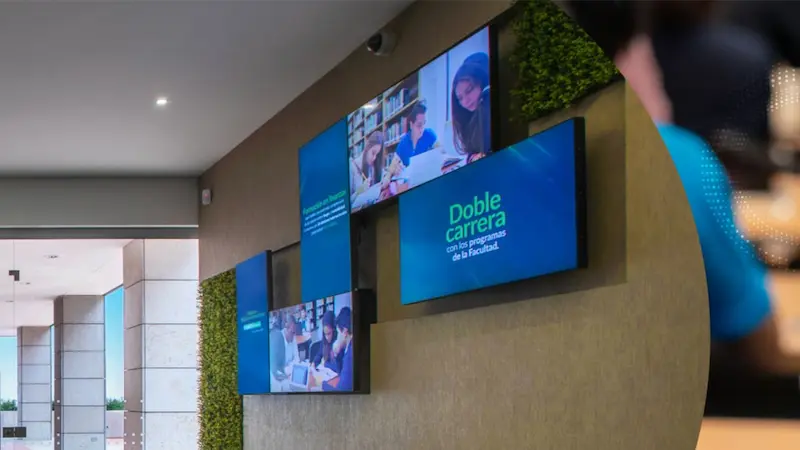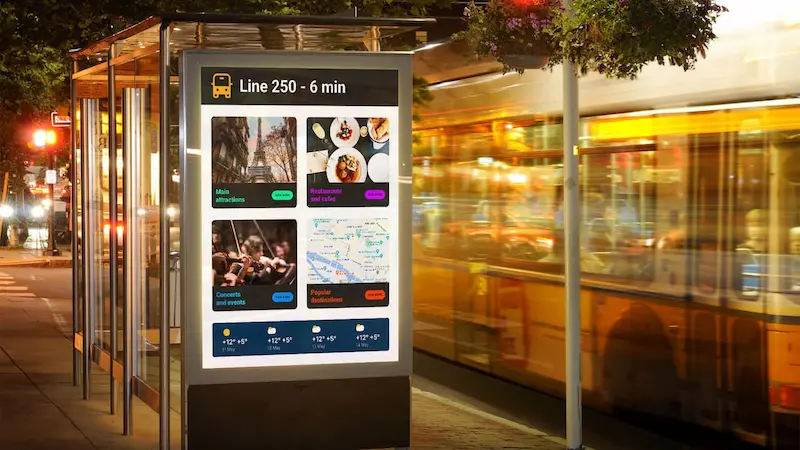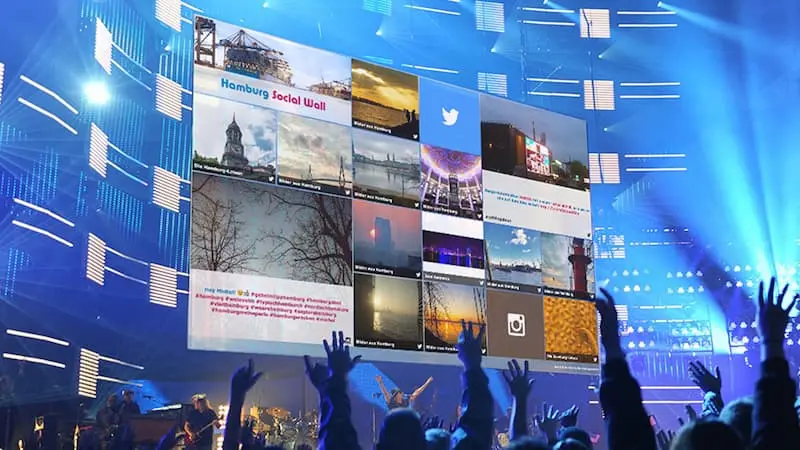
Table of Content
Every major consumer goods company strives to grab consumers' attention while shopping. With hundreds of products vying for consumers' attention, standing out in the aisles is crucial. Point of Sale Marketing (POSM) has been around for a while, and it's been useful in promoting brands and shops to buyers, but like with other things, POSM has to adapt to the current business climate.
This piece covers all you need to know about Point of Sale Marketing (POSM), from the basics to the most innovative examples, such as in-store advertising initiatives and brand activations.
Retail displays

Retail displays play a significant role in the overall success of your in-store advertising and visual merchandising efforts. They are visually attractive, attention-grabbing methods of advertising your wares and luring customers to purchase more. There are many forms of retail display and circumstances under which each is most effective, given that shop designs and available foot traffic vary widely. These storefront fixtures can help attract attention from the sidewalk, halt shoppers while they stroll an aisle, or convince them to make a last-minute purchase.
What is a retail display?
A retail display is any fixture or area inside a business to draw in people, encourage interaction, and ultimately increase sales. It can be virtually anything that shows or advertises your goods or services.
What is a Point of Sale Display?
Point-of-sale (POS) displays are advertisements placed close to physical checkout counters. POS displays are set up to highlight certain items to shoppers. There is a large range of sizes and forms available for point-of-purchase displays. It comprises countertop displays, end caps, show racks and rails, display cabinets, freestanding displays, gondola screens, shelf edging, suspended signs, banners, posters and ledges.
POP display / Point of Purchase displays
A point-of-purchase (POP) display is an alternative to stores' standard aisle shelving to showcase their products. These displays may be seen in the center of the store's wide aisles; sometimes known as "action alleys," or anywhere else there's free floor space.
Using POP displays may boost sales in numerous ways. To begin, they can take your product out of the general chaos of the home aisle and put it in the limelight so that customers won't suffer "analysis paralysis" from having too many alternatives. Having additional opportunities to showcase your goods to potential customers is one of the main benefits of POP displays.
What is POS vs. POP display?
Understanding the distinction between POP displays and POS displays when choosing between the two to showcase your goods is crucial. POP and POS displays are designed to get people talking about your business. The primary distinction between the two is that point-of-sale (POS) displays are confined to the region immediately next to cash registers. In contrast, point-of-purchase (POP) displays may take up floor space anywhere inside the retail establishment where they are located.
Common point-of-sale (POS) displays include magazine racks, shelves of sweets leading up to the register, and refrigerated displays at the end of the checkout line. Typically, items that come in unique packaging, such as candies and drinks, do their best at these places because they encourage customers to make hasty, impulsive purchases near the end of their shopping journey. Investing in POS displays is something smaller companies that sell things that aren't constantly at the top of a customer's buying list should seriously consider doing.
Types of retail displays

Dump Bins
Dumping stations are commonplace in department stores, shopping centers and malls. A dump bin is an enormous container with things sold in their original packaging. It's one of the simplest and most ubiquitous forms of visual communication. You can present small objects such as socks, candy, toys, and accessories in them. The goal of neatly arranging several precious items in these business display bins is to entice customers to make a quick purchase. Visual merchandisers have come to recognize the sales magnet potential of dump bins and are increasingly putting products on display in these containers.
Freestanding Displays
Compared to dumpsters, freestanding displays are neater and take up less space. Customers may browse and choose items from all sides when shown in freestanding displays. They use hooks and shelves to showcase bigger things.
Window Displays
Retailers and businesses have found that well-designed window displays attract customers like glue. Having your product shown in storefront windows may strain your marketing budget, but the investment will pay dividends.
Entrance Displays
Entrance signs at the door are necessary. It's a form of storefront display that puts an item on exhibit right at the front door. If there is sufficient area for customers to stroll outside your business, you may put up an outside entrance display.
Endcap Advertising
Endcap displays are shelves at the end of a double-sided retail display case. These displays are common in grocery shops and hypermarkets with several aisles. These promotional displays in stores are strategically placed to catch the eye of shoppers attempting to make their way through the store.
Digital displays
One of the most important things you can do as a shop owner is to attract customers to your physical location. A steady stream of customers passes your doorway constantly. But the question is, how do you persuade them to come in? Perhaps advertising is the first thing that springs to mind. But how do you get the word out?
Traditional forms of signage, such as banners and handwritten signs, are still used by certain entrepreneurs. However, other business owners choose digital displays for retail.
What exactly is a digital display?

Screens used for digital advertising, promotions, brand advertising, menus, information, and communications are a subset of the larger category of electrical sign displays known as digital displays.
These digital display panels are commonplace in many businesses, including shops, hotels, restaurants, offices, cafés and bars. They utilize a mini-computer/media player linked via HDMI to a television, LFD, LCD, or LED monitor to show and operate media.
Smart TVs using Android operating system are another convenient option. Operating systems (OS) for digital signage media players include Android, Windows, Mac OS, and Linux. The signage software and specific needs determine the system's operation.
POS Digital Signage
With the right point-of-sale (POS) software, you can expedite your business's order-taking, stock management, client payments, and more. But did you realize that your POS system has much more to offer?
If you own a business, integrating your point-of-sale system with digital signage might help you maximize the benefits of both systems.
POSM creative campaigns
A picture is worth a thousand words. It is particularly true for theme-based advertising efforts. 'Show, don't tell' point of sale materials (POSM) may be more helpful to consumers than merely excellent writing in conveying the campaign's message. The good news is that you can do this affordably and easily.
Here are some creative POSM campaigns:
Branding with musical activation in-store
It's love at first sight when originality meets the proper instruments. Nestle Bolivia chose to execute an in-store activity for its Maggi brand of boxed soups. They had to be inventive since they couldn't afford anything more expensive.
Nestle Bolivia used digital signage technology to transform a regular soup pot into a singing one. But this is no ordinary singing kettle! It is the kind that performs Italian opera at the grocery store. Cool! The campaign increased sales by 50%, shocked consumers, and spread like wildfire throughout the Internet.
Back to school
A 'back to school' theme may be included in POSM for any product, not only those directly associated with returning to school (such as supplies, backpacks and uniforms).
Example: Colgate toothpaste promotes healthy habits in anticipation of a successful academic year. Daily success begins with good dental hygiene. Everyone, from school-aged children to their parents, who wake up at the same time every day has to brush their teeth in the morning, and ideally, they'll do a good job of it.
Food Slot at Hellmann's
This campaign shows creativity at its best. To show that mayonnaise can be used for more than just dipping french fries, Hellmann's created a slot machine-themed point-of-purchase (POP) display. Players had a set of ingredients and were given a taste of a dish that used those items. These three incredible POS marketing efforts prove that innovative thinking backed by cutting-edge technology can awe and persuade consumers to spend more money.
Coca-Cola Zero in an inverted pyramidal display

Coca-Cola pushed the boundaries of imagination to prove that dreams may come true. Cans and bottles of Coca-Cola Zero were carefully piled to form an inverted pyramid. Shoppers, unsurprised, were yet taken aback by this exhibit and eager to make a buy. Sales of Coca-Cola Zero rose by 13 percent after being featured on this Point of Purchase display.
The following are some benefits of connecting your point-of-sale system with digital signage:
Promote your business more effectively on-site
You can monitor sales and stock through POS systems and disseminate key messages via digital billboards. Combining them allows for optimum in-store advertising, based on current stock levels, in real-time. For instance, your point-of-sale system may warn you that the chicken wings will go bad in a couple of days. With the addition of digital signage, you can utilize the data to increase the number of chicken wing advertisements shown in-house automatically.
Achieve optimum point-of-sale customer interaction
Studies have shown that advertising to consumers may improve the purchase rate by as much as 45% when paying for their order. This kind of marketing is simple because of POS connectivity with digital signage.
When the two platforms are connected, you can even present POS advertisements based on the goods the visitor has previously added to their order. Additionally, tailored advertising that considers the time of day an order was placed, customer loyalty profile information, and the products purchased may improve repeat sales by as much as 22%!
Boost the efficiency of your contactless ordering method
According to statistics, 77% of consumers favor contactless ordering. Contactless ordering has many advantages, but it might limit your staff's ability to up-sell and cross-sell to clients.
Digital signage with point-of-sale integration is the answer. Customers may enjoy the convenience of contactless ordering with the help of digital signs while also being automatically up-sold and cross-sold. Your team may now focus on other priorities.
Conclusion
Your POSM (Point of Sale Marketing) is the best place to establish yourself as a brand. This is where your marketing efforts should concentrate. It would help to choose powerful Look digital signage software for your digital screens to publish your content remotely, schedule your advertising campaigns in advance and monitor the current network status in real time. Try it for free!








